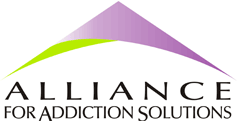
Scientific Studies
There are thousands of articles in the medical literature about the nutrients used for addictive disorders, as discussed on this website (for example, if you type “GABA, anxiety” into the PubMed.gov search box, over 5,800 articles are retrieved).
You can find a representative few relevant studies listed at the end of many sections throughout our website and a longer list here. We’ve also highlighted in this section two pioneer researchers whose work inspires us, Kenneth Blum, PhD (whose work features the amino acid link to addiction) and Stephen Schoenthaler, PhD (whose work features the nutrient deficiency link to criminal behavior).
In addition, you will find below a link to another resource, the Academy for Addiction & Mental Health Nutrition’s Library for Scientific Resources.
Kenneth Blum, Ph.D Research
One of the early researchers in the genetic basis for all compulsive, addictive, impulsive behaviors is pharmacogeneticist Kenneth Blum, PhD, who did much of his seminal work at the University of Texas in San Antonio. When he moved from laboratory rodents to field research with people, he and his colleagues discovered malnourished brains with neurotransmitter deficiencies, and he began creating formulas of nutrients designed for opiate users, stimulant users, people craving comfort foods, and other unique populations defined by their neurotransmitter needs.
Following are a very few of Blum’s studies, which date back to the 1960s.
“Reward Deficiency Syndrome.”Blum, K., et al, American Scientist, March-April 1996, vol. 84(2), p.132.
"Neuro-nutrient therapy for compulsive disease: Rationale and clinical evidence," Blum, Kenneth, PhD et al Addiction and Recovery, Aug. 1990
“Reward Deficiency Syndrome: A Biogenetic Model for the Diagnosis and Treatment of Impulsive, Addictive and Compulsive Behaviors.” Journal of Psychoactive Drugs; Vol. 32, Supplement; November 2000; Editors Kenneth Blum, PhD, Eric R. Braverman, MD. (The Journal, a quarterly publication, has been in print since 1967. Subscriptions are $90/year. Haight-Ashbury Publications, 856 Stanyon St. San Francisco, CA 94117, (415) 752-7601. This special issue is devoted to the concepts introduced by Ken Blum on the biological basis of addictions.)
“Enkephalinase inhibition and precursor amino acid loading improves inpatient treatment of alcohol and poly drug abusers: Double blind placebo controlled study of the nutritional adjunct.” Blum, K. et al. SAAVE Alcohol, 5: 481 493, 1988.
“Alcoholism: Scientific basis of a neuropsycho¬genetic disease.” With Trachtenberg, M.C. Intl. Journal of Addiction, 23: 781 796, 1988.
“Improvement of inpatient treatment of the alcoholic as a function of neurotransmitter restoration: A pilot study.” With Trachtenberg, M.C. and Ramsey, J.C. Intl. Journal of Addiction, 23: 991 998, 1988.
“Improvement of cocaine induced neuromodulator deficits by the neuronutrient Tropamine.” With Trachtenberg, M.C. Journal of Psychoactive Drugs, 20: 315 331, 1988.
“Neurogenetic deficits caused by alcoholism: Restoration by SAAVE™, a neuronutrient intervention adjunct.” With Tractenberg, M.C.Journal of Psychoactive Drugs, 20: 297 313, 1988.
“Reduction of both drug hunger and withdrawal against advice rate of cocaine abusers in a 30 day inpatient treatment program by the neuronutrient Tropamine” With Allison, D., Trachtenberg, M.C., Williams, R.W., and Loeblich, L.A. Current Therapeutic Research, 43: 1204 1214, 1988.
“Cocaine Therapy: The ‘Reward Cascade’ link.” With Trachtenberg, M.C., and Kozlowski, G.P. Professional Counselor, Jan. 1989.
“A commentary on neurotransmitter restoration as a common mode of treatment for alcohol, cocaine and opiate abuse.” Integrative Psychiatry, 6:199 204, 1989.
“Neurodynamics of relapse prevention: A neuronutrient approach to outpatient DUI offenders.” With Brown, R.J., and Trachtenberg, M.C. Journal of Psychoactive Drugs. 22(2):173 187, 1990.
“Neuronutrient therapy for compulsive disease: Rationale and clinical evidence.” With Rassner, M., and Payne, J.E. Addiction and Recovery, 10(2):12 16, 1990.
“Relapse Prevention and drug hunger reduction induced by potential neurochemical activation of brain reward circuitry using Synaptamine™ (Syn 11) in substance use disorder: A preliminary open clinical trial in a long term outpatient treatment program.” Blum, K., et al. (To be submitted to European Psychiatry.)
“Neuronutrient effects on weight loss in carbohydrate bingers: An open clinical trial.” With Trachtenberg, M.L. and Cook, D.W. Current Therapeutic Research. 48(2):217 233, 1990.
